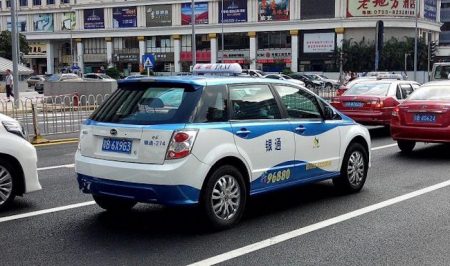January 19, 2019 – Shenzhen is not the first city in China to go totally electric in its taxicab fleet. That honour goes to Taiyuan in northern China, a city of 4.3 million that has been all electric since 2016. But Shenzhen at 12.5 million in population with a fleet of 21,689 cabs, 99% now electric, is a pretty big deal.
In 2017, Shenzhen’s bus network of 16,000 vehicles went electric. The move meant annual carbon emission reductions of 440,000 tons. It was one of 13 cities invested in promoting alternative energy public transport. But with the taxicab fleet now going electric, it means that Shenzhen’s carbon emissions now will decrease by 850,000 tons per year, a 48% cut in airborne pollution.
The all-electric transit initiative doesn’t include Uber-like ride-hailing vehicles which remain on the city’s streets and are still popular with residents.
How can Shenzhen support so many electric vehicles? An electric vehicle infrastructure of more than 20,000 public charging stations is in place making it possible for the entire fleet of electric taxicabs to stay on the road. The buses have their own charging infrastructure with 180 depots able to accommodate up to 20 buses at a time allowing them to travel 200 kilometers per day, more than sufficient to handle their routes.
To improve the efficiency of the fleet, each taxicab is equipped with data terminals that do route planning and optimize the distribution of vehicles to make sure they are in place where passenger demand is greatest at all times.
The greenhouse gas emissions produced by the transportation sector represent a significant part of the pollution that Shenzhen experiences throughout much of the year with numerous smog days from suspended nitrogen oxides, carbon dioxide, and particulate matter. Some of these emissions come from coal-fired thermal power plants, but cars, trucks, and buses play a significant role.
An unintended bonus for the city is noise reduction. With electric vehicles replacing gasoline and diesel-powered cars and buses, Shenzhen’s streets are becoming a lot quieter. In fact so quiet that the bus authority has been receiving complaints requesting it add artificial noise to its fleet because people are unaware of the buses at times if they don’t see them coming.
How has Shenzhen been able to afford to go electric? Much of the cost is being subsidized by China’s central government which plans to end its assistance program by 2020. That’s why more than 30 other cities in China have accelerated plans to go 100% electric for bus transit within the next two years. Among these are Guangzhou, Zhuhai, Dongguan, Foshan, Zhongshan, Nanjing, Hangzhou, Shaanxi, and Shandong, representing urban areas with a population exceeding 300 million.















